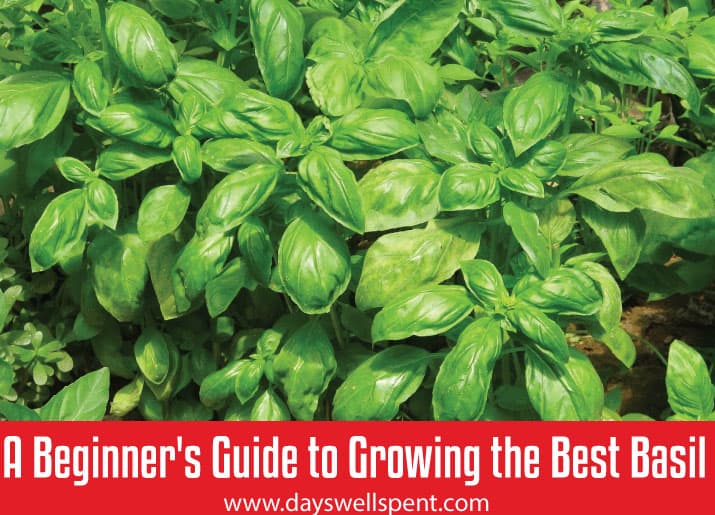A herb garden just isn’t complete without at least one basil plant. A woody, branching plant, basil is a warm-weather annual that grows very fast in 80 to 90-degree weather. When growing basil, note that two or three plants will yield plenty of fresh leaves for a family of four. Many gardeners mix various types of basil in their flower and vegetable beds, ensuring a quick harvest anytime. Basil also grows well in containers inside and outside making it the perfect starter herb for new gardeners.

STARTING YOUR BASIL
Basil is most easily grown from seeds sown directly outdoors in warm soil (at least 60 F) after spring frost has passed. Germination is quick when the soil is warm and moist. Seeds can also be started indoors 4-6 weeks before the last spring frost date. Do not transplant outdoors until the nights are warm. Plants should be spaced about 6″ apart. Basil can be grown in USDA Zone 3 and warmer.
GENERAL GROWING CONDITIONS
I have found basil to be a very hardy and forgiving plant whether it’s grown inside or outside. However, there are optimal conditions it prefers.
- Soil pH 6.0
- Rich, moist, well-drained soil
- Full sun
- Pinch back to encourage bushy growth
How Long Does Basil Take to Germinate
Basil germinates in 7 to 10 days after planting. It's usually ready for harvest within 3 to 4 weeks.
GROWING BASIL IN A POT
Basil can be grown in containers filled with rich soil that is never allowed to completely dry out. I place mulch on the soil of our basil growing in pots outside.
- Use a large container with good drainage and fertilized potting soil.
- Place the container where it gets at least 6 hours of sunlight.
- Protect the plant from heavy winds
- Water regularly so the soil stays moist.
GROWING BASIL IN A GARDEN
Basil needs full sun and well-drained soil, but the plant should not be allowed to wilt or the soil dry out completely. Soil that is rich in organic matter will stay damp longer and help keep the basil healthy. Mulch the ground with your preferred much to help conserve moisture.
If the site is windy, give basil a windbreak a foot or so tall.
COMPANION PLANTING
Basil is a favorite companion of tomatoes and peppers, not only in the kitchen but also in the garden. Basil is reported to enhance the growth of both plants. We have found that the tomato plant also provides some shade for the basil as the summer months heat up.
HARVESTING BASIL
Pinch off fresh young basil leaves whenever you need them if you plan to use them within the day. Cut off a stem of leaves and place it in water if it will be longer than a day before using the leaves. Frequent harvesting of your basil will keep the plant healthy and encourage the plant to “bush”. Never remove more than 20% of the leaves unless you are at the end of the growing season.
Basil should not be allowed to flower unless you plan to let it go to seed. Once the basil plant blooms and goes to seed, it will not continue to produce fresh leaves as quickly. Instead, the plant prepares to die off by putting all of its energy into forming the blooms and seeds. If you accidentally allow a flower head to form, you can pinch it off. Often the plant will continue to grow.
COMMON HERB GARDEN PRACTICES
If you are interested in learning more about herbs, we have a herb course that regularly add videos and articles. You can find out more about our herb course here.
